What the 2018 winter wheat varieties offer growers
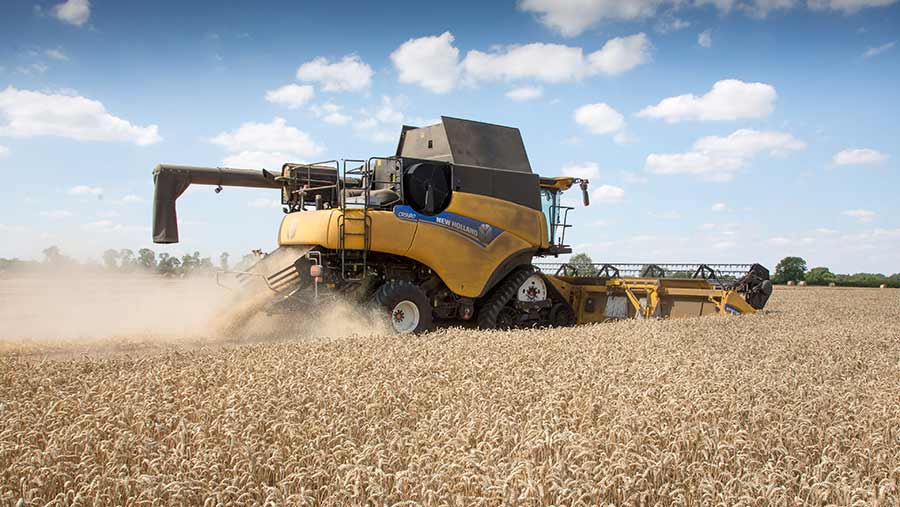 © Tim Scrivener
© Tim Scrivener Most of the newly recommended winter wheat varieties for this coming autumn have more yield to offer, but that’s considered unlikely to be enough to tempt growers to make sweeping changes.
After last year’s lodging experiences and harvest delays, there is just as much attention being given to straw strength and grain quality as variety choices are made, with growers seeking consistency and end-user appeal.
See also: Advice on picking the right OSR varieties to drill this autumn
Greater scrutiny of disease resistance ratings and untreated yields is also being reported – as the fungicide armoury continues to be eroded and the resistance threat remains.
That’s been reinforced by varieties with identical ratings showing different levels of disease in the field.
So which varieties should wheat growers look to so they can enjoy these extra benefits?
Variety picks |
||
| For market appeal | For insurance | For excitement |
|
|
|
Milling wheats
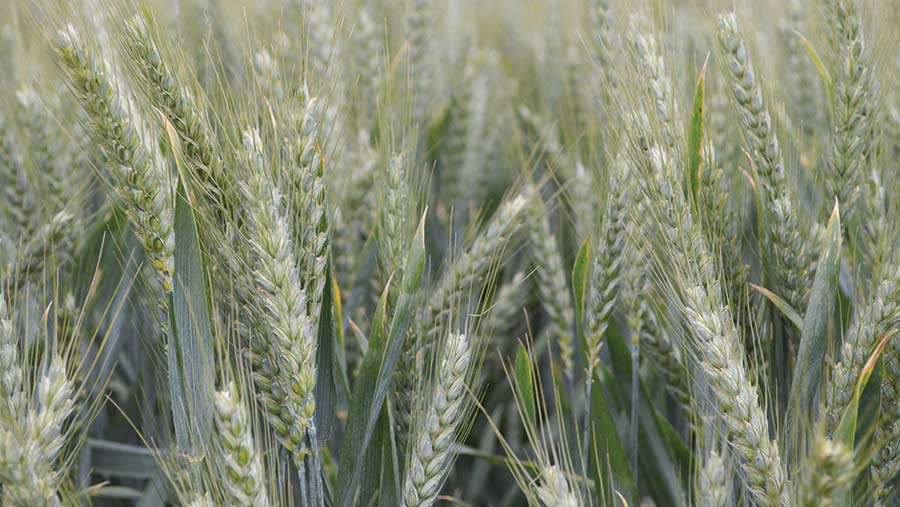
With milling premiums down, there will be less speculative growing of Group 1 varieties in 2018-19, predicts Andrew Bourne, seeds manager at T Denne & Sons in Kent, where as much as two-thirds of the winter wheat area is down to Group 1 and 2 varieties.
“For dedicated growers, it’s not the right time to lose faith,” he says. “Opportunities remain, but there are differences in the amount of nitrogen required to hit the milling specification – with some varieties needing over 300kg/ha.”
He picks out Zyatt and Skyfall as the Group 1 front-runners – the former for its high yield of 102% and flexibility, and the latter for its second-wheat performance and suitability for lighter land.
“It’s worth prioritising Skyfall at harvest to be certain of its Hagberg. With Zyatt, you need to push it with nitrogen if milling is your target.”
Lee Bennett, head of seeds business at Openfield points out millers and bakers have different requirements from varieties, with baker Warburtons specifying Crusoe and Illustrious on its contracts.
“Crusoe has done so well for both growers and millers and we all know that its weakness is brown rust, so have a plan for that. If you struggle to hit protein levels with other varieties, Crusoe is the right choice for you.”
Illustrious has replaced Edgar on the Warburtons list and brings good disease resistance to the table, although it doesn’t offer orange wheat blossom midge.
“It’s a tall variety, so use a plant growth regulator programme and try drilling an extra 25 seeds/sq m, as you will see a yield benefit from higher ear numbers.”
Of the Group 2s, Siskin is expected to remain popular and was the second-highest selling variety in 2017-18.
This year, there is a buy back contract on offer from Rank Hovis Milling, offering premiums of £5-6/t for higher protein grain.
“It’s got high yields and good disease resistance, including a 6.9 for septoria,” says Mr Bennett.
“Siskin is also very quick-growing and slightly weak in the straw, so you need to manage that.”
It can be a beast in the autumn, so don’t drill Siskin before 1 October and make sure that you apply an extra 40kg/ha of nitrogen on the ear if you are hoping for the milling premium, advises Mr Bourne.
“It has shown resilience, which is valued by growers. Siskin offers better end quality and disease resistance than Lili.”
Group 3 biscuit wheats
New to the AHDB Recommended List this year in the growing Group 3 category is Elicit from Elsoms.
A yield of 103% puts it on a par with Barrel and it is likely to be in demand from biscuit wheat growers, predict commentators.
With better disease resistance than others in the biscuit sector, especially its septoria rating of 6.4, Elicit also has good straw strength and orange wheat blossom midge resistance
“As far as marketing goes, Elicit meets both milling and export requirements,” points out Mr Bourne.
“It’s certainly one that Group 3 growers should try, to see how it performs on their farms.”
His only concern about Elicit is its Hagberg of 206.
“That’s a close call, so it should be given priority at harvest. We all hope that it’s a stable Hagberg, as its specific weight is fine.”
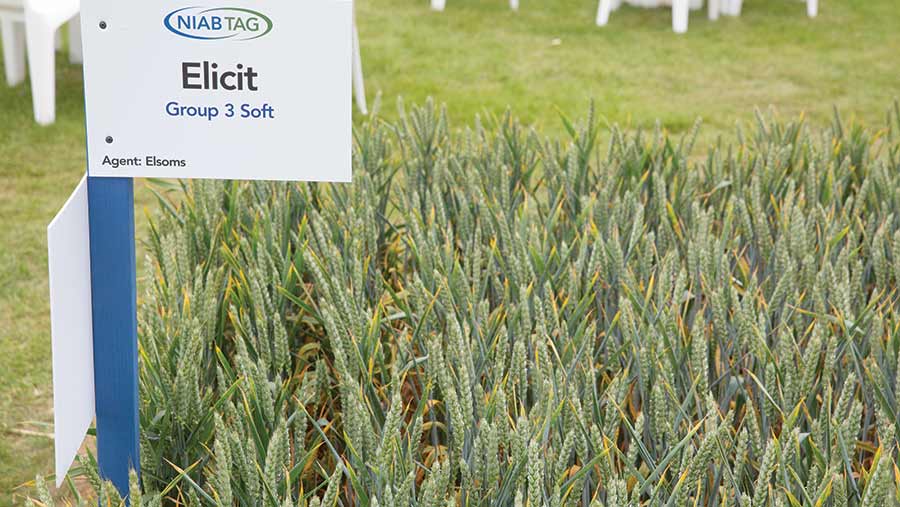
© Tim Scrivener
Of the others, Basset is a flexible variety for a range of situations and also does well as a second wheat, but is 3% lower yielding than Barrel.
“That doesn’t matter, growers don’t just go for the yield factor,” he continues. “It has a better septoria score than Barrel, which really shows in the field.”
Zulu, which has given consistent grain quality and been a good second wheat, is now susceptible to yellow rust and lodging.
“Zulu has become too dangerous for many,” comments Mr Bennett.
“However, it does have a place in Scotland, as it is the only Group 3 variety with distilling potential.”
Feed wheats
There are two new soft feed wheats and two new hard feed wheats on the list this year, with all four bringing additional yield.
Of the soft types, Jackal from KWS and Elation from Elsoms are both on 104%, have orange wheat blossom midge resistance and are suitable for distilling.
Out of the two, Jackal offers a slightly higher septoria rating at 5.1, but neither variety is seen as a contender for the West or where there’s an intention to reduce fungicide inputs.
“Elation has good straw strength and seems to do well as a second wheat. For Leeds growers looking to move on, it is a step forward for disease,” summarises Mr Bennett.
Jackal, which has a recommendation for the North, has given very high yields and seems to work well as a first and a second wheat. Its Hagberg of 160, however, is the lowest in this category.
Of the other soft Group 4s, Nick Green, technical seed specialist at T Denne & Sons highlights Sundance, Motown and Revelation – but all for different reasons.
“Sundance has the best septoria score of any recommended variety at 7.4,” he says. “It’s also a good second wheat and has orange wheat blossom midge resistance.”
His concern with Sundance, especially given the weather, is its low specific weight. “Having had such a dry June, that could be a problem this year. We’ll see what harvest brings.”
Mr Bennett agrees. “It needs a T3 spray to help manage its specific weight. It’s also a variety that needs good straw management.”
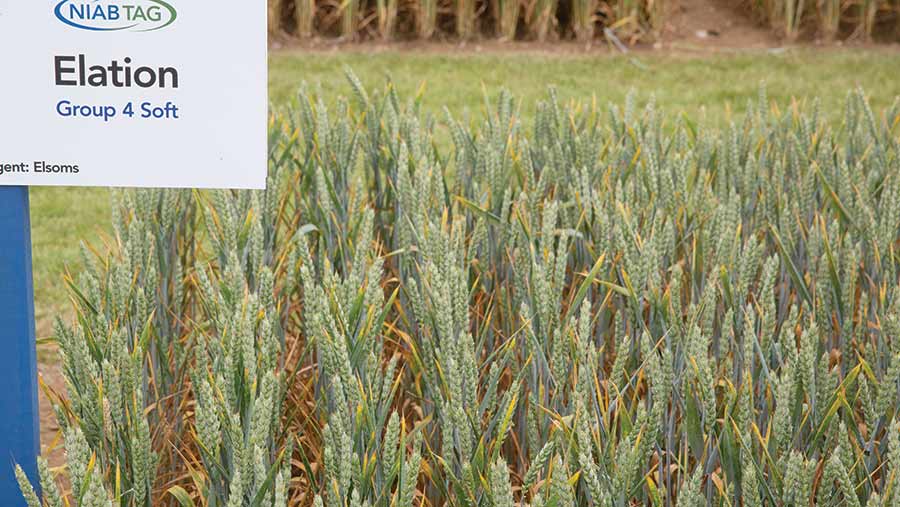
© Tim Scrivener
Motown, which is capable of very high yields in certain situations, is another variety which needs help with its straw. “It works well as a second wheat and on light soils, where lodging is less of an issue.”
Revelation has stood the test of time, notes Mr Green. “It still offers good disease resistance, decent straw and grain quality, so often commands a premium.
“It is also suitable for distilling and for export. Its later maturity score is the reason why it has lost some followers.”
The choice of hard Group 4 feed wheats has been bolstered by newcomers Gravity from RAGT Seeds and Gleam from Syngenta. Both are very high yielding and could fit together well on-farm, suggests Mr Bennett.
“They can be separated on septoria and straw strength, with Gleam being slightly better on both counts.”
He believes Gravity is a good choice for lighter land and as a second wheat, describing it as a feed version of Skyfall. Gleam, with its septoria score of 6.2, will have appeal for growers in the west and on the heavy land sites.
The main competition in this sector comes from Graham, Shabras and Costello, reveals Mr Green, who expects all three varieties to sell well.
“Graham and Costello were in the top four in 2017-18 and that’s unlikely to change,” he says. “Shabras was new to the list then, and there wasn’t a huge amount of seed for last autumn.”
Shabras can be grown as a first or a second wheat, but it is susceptible to grown rust, he acknowledges.
In contrast, neither Graham nor Costello make good second wheats, but they have strong, stiff straw and good all-round disease resistance, together with better grain quality than Shabras.
Costello has become a benchmark variety, despite being lower yielding than most of the Group 4s, says Mr Bennett.
“It makes the farmers job easy,” he continues.
“Nothing else can beat its specific weight of 81.1kg/hl, it has never taken any yellow rust and its septoria score of 6.4 is strong. It also has a lovely plant type, being very stiff and not too tall.”
Independent variety view
Being slightly adrift on yield will not hold back the sales of winter wheat varieties if they have other attributes, reports cereals specialist Clare Leaman of Niab Tag.
She expects Zyatt, Crusoe and Skyfall to be the main milling varieties going forward, with Siskin having a place with both milling and feed wheat growers where it isn’t drilled early and receives the right agronomic management.
“There are some Group 2 candidates which might be of interest. Extase from KWS is early and has a very high untreated yield, while Detroit from Limagrain has midge resistance.”
Elicit, with its good septoria rating, is her Group 3 pick, but it could be challenged next year by two candidate varieties – Firefly and Rhythm – if they live up to their early promise in trials this year.
Of the soft feed wheats, Mrs Leaman can see a place for both Elation and Jackal over the incumbent varieties and hopes that this year’s data on the candidates will help to pull them apart a bit.
“There are five soft feed wheats waiting in the wings,” she says. “Skyscraper leads the way at this stage, on 109%, but there was a bit of lodging in it last year.”
There will be some Skyscraper seed available this autumn, giving growers an opportunity to try it for themselves.
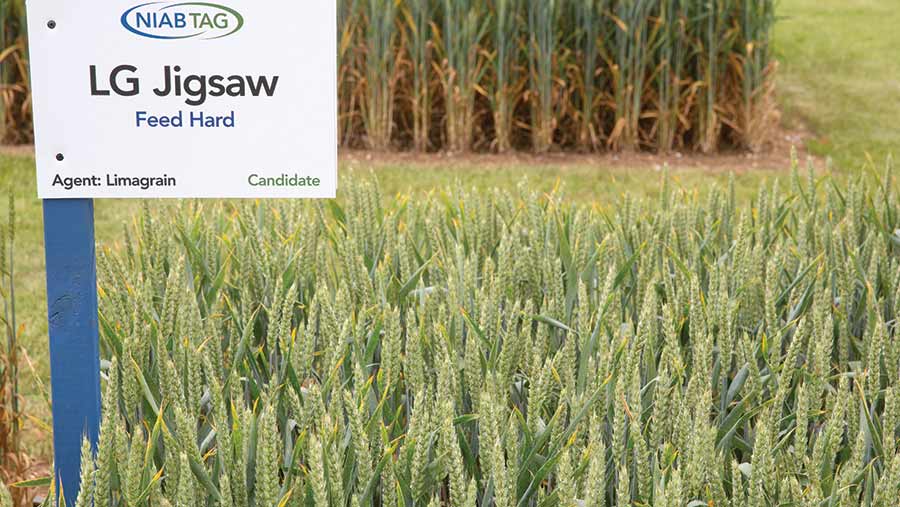
© Tim Scrivener
Otherwise, Spotlight appears to have good grain quality, but is later to mature. “It’s too early to say much on these varieties. It will be interesting to see how they fare.”
Hard feed wheat varieties remain popular and there is a good selection already, so the newcomers will have to compete, she summarises.
“Gravity and Gleam are good additions to the list and bring a bit more yield, just as grain prices are rising.
“They are up against Kerrin and Shabras for yield, and Graham and Costello for proven popularity.”
As a result, the only hard feed candidate, Jigsaw, has a very high bar to clear, she comments.

